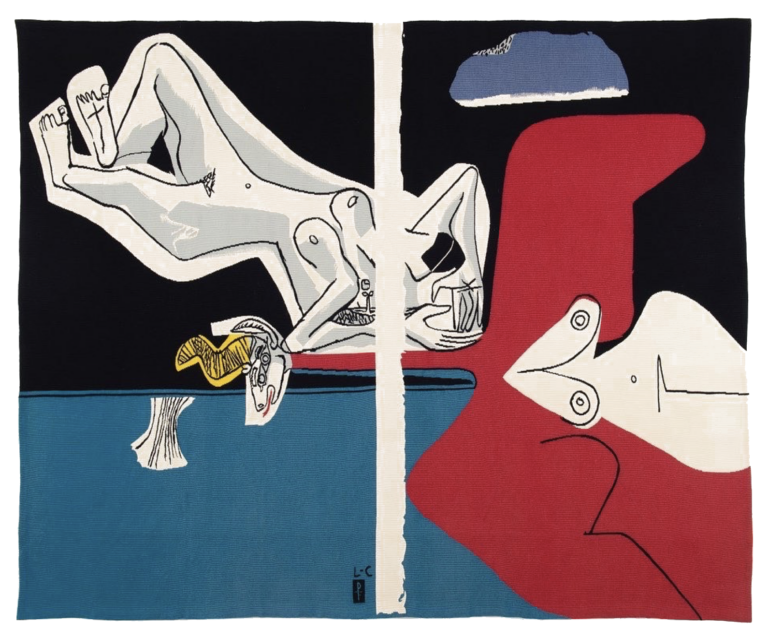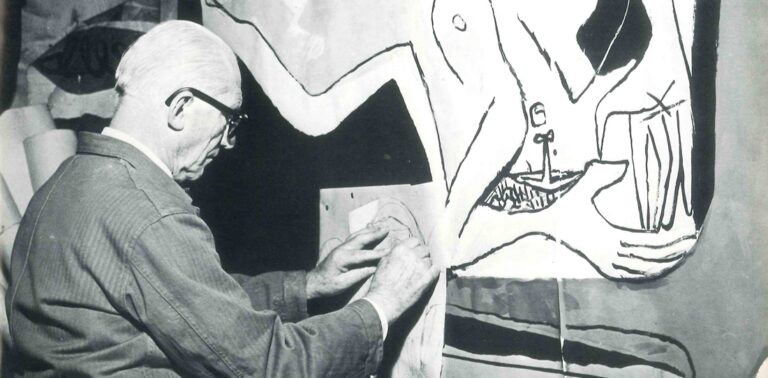Le Corbusier Tapestries
Le Corbusier discovered tapestry in 1936 when the collector Marie Cuttoli commissioned him a cartoon to revive the production of artists’ tapestries in Aubusson.
But it wasn’t until 1948 that he conceptualized the artistic and architectural function of tapestry by developing the theory of the “Mural Nomade,” envisioned as a mobile component of modern habitation, capable of “detaching from the wall, rolling up, being taken under the arm at will, and hanging elsewhere.”
This turning point came through his encounter with Pierre Baudouin, an artist and teacher in Aubusson, who bridged the gap between Le Corbusier and the weavers to achieve the perfect transposition of the cartoon into tapestry.
Drawing inspiration from subjects explored in his drawings: manufactured objects of purism, feminine figures, poetically reacting objects dear to Léger, and more spiritual themes like “UBU” or “TOTEM,” Le Corbusier had about thirty tapestries woven between 1936 and 1965.
He also received commissions for large-scale tapestries for public buildings, such as the UNESCO headquarters in Paris and the stage curtain for the Bunka Kaikan Theater in Tokyo.
These works were exhibited in several prestigious museums and institutions worldwide, showcasing their significance in the realms of art and architecture. Notable exhibitions include the Musée des Arts Décoratifs and the Fondation Le Corbusier in Paris, the Centre Pompidou, as well as the National Museum of Modern Art in Tokyo and the Museum of Modern Art in New York. These exhibitions have helped to raise awareness and appreciation for Le Corbusier’s work in the field of tapestry, underscoring his importance as a major artist and architect of the 20th century.


